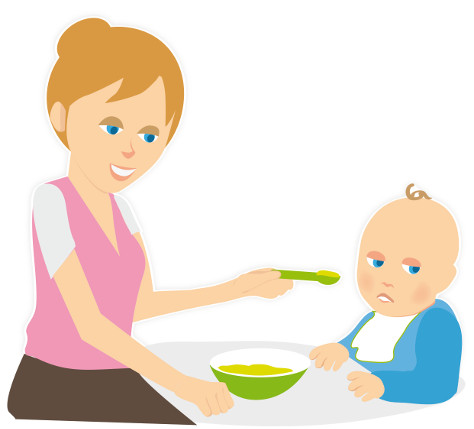Helping your baby learn to like more tastes
Getting used to different flavours and tastes is all part of the weaning process, responsive feeding can help
Babies are born with a liking for sweet tastes. Both breastmilk and formula milk taste quite sweet. Your baby will not notice a big taste difference when you offer cereal mixed with his usual milk. When you introduce vegetables and fruit these tastes will be quite different.
Your baby may show some surprise at a different taste and screw his face up at a bitter taste from the vegetables. Your baby may even refuse to take more by turning their head away.
Do not be put off by this reaction: your baby he is just telling you this is a new taste for them. Just offer it again the next day or a couple of days later. Even though your baby may only take one teaspoon at a time, each time you offer this food your baby will become more familiar with that taste and in this way he will learn to like it.
Responsive feeding
Responsive feeding means following your baby’s signals and stopping the meal when your baby signals to you that they have had enough. Always respect his decision that he has had enough so that he enjoys the meal experience and doesn’t feel pressured to eat more than he wants to. Don’t extend the meal to try and get him to finish all the food you have prepared.
Your baby is telling you he is happy to eat more when they:

• opens their mouth as the spoon approaches or
• picks up finger food and puts it in their mouth
Your baby is telling you they do not want any more food when they:

• keeps their mouth shut
• turns their head away from the food offered
• puts their hand in front of their mouth
• pushes away a spoon or bowl/plate with food
Some babies find feeding quite tiring and like a pause now and again. After a pause offer more food but if they still refuse then it is time to stop the meal.
Responsive feeding also includes allowing you baby to stop drinking milk when they have had enough. As you baby eats more food the amount of milk they drink will begin to decrease. So allow your baby to stop drinking milk from a bottle when they turn their head away or push the teat out of their mouth.